What happened to the legendary monastic treasure? Were the knights in white cloaks heretics and blasphemers? Or did they guard - or still keep - the secret of the Holy Grail? The riddles surrounding the Order of the Temple continue to fuel the imagination of historians… and beyond. But what can you say with certainty?
Myth 1. The main task of the Templars was to protect pilgrims in the Holy Land
On the origins of the Order of the Poor Knights of Christ of the Temple of Solomon - as the full name of the Knights Templar sounds - we know little. It is believed that the direct impulse that led to the realization of the idea of gathering monk-knights was the massacre of pilgrims in 1119. However, there are no contemporary records of those events.
According to later chroniclers, the history of the Knights Templar began in 1119 or 1120 with the oath taken by nine men under the leadership of Hugh of Payens. Apparently, they vowed then to live according to the rule of Saint Benedict and to protect the routes of Christians traveling to the Holy Land. The brave monks received their own monastic rule only in 1128 at the synod of Troyes. Interestingly, as Martin Bauer writes in his book Templars. Truth and Myth ”, about the protection of pilgrims, there is not a word in it .
It is true that the Order patrolled the roads around Jerusalem in the first decades of its existence. This state of affairs lasted until the Second Crusade, which took place in the years 1147-1149. The Templars used this period to train their combat skills in the fight against highwaymen. There was little else left for them. Due to the strict rules and requirements of monastic life, monastic knights were not allowed to participate in tournaments. And they could only hunt lions.
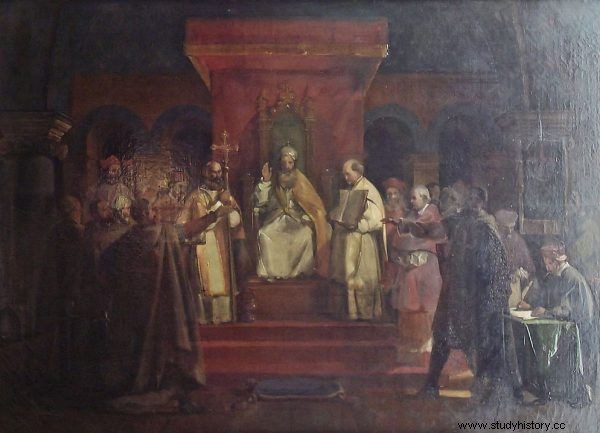
This is how the approval of the official Templar rule at the Synod of Troyes was envisioned in 1840 by the painter François Marius Granet (public domain).
After gaining a series of papal privileges, however, Christ's poor knights became more than that. They turned into a real army, subordinate only to the Holy See. From then on, they were one of the main Latin armed forces in the east and an important political player in the region. The omission from the rule of the original cause of the formation of the order turned out to be extremely beneficial. It allowed for flexible adaptation to new possibilities.
Myth 2. All Templars were knights
The myth that all Templars had to be knights is fairly widespread. Yet not all brothers were knights. The medieval division of society into working, praying and fighting also applied to the Order of the Temple itself, with the monks being both knights and servant brothers - the servants. Of course, according to the rule of the Order of the Temple, all monks were poor and theoretically did not own anything. In practice, whether the accepted person became a knight or servant was determined by his wealth and origin.
The servant brothers differed from their knights' brothers in black or brown habit. Usually, there were about ten servant brothers for one knight in a white cloak. The latter, although they did not have a knightly status, also went into battle, although they were usually less armed. In addition, they performed many more services necessary for the functioning of the order.
Chaplains constituted a separate, third category of those admitted to the Order. They were ordained Templars. These monks did not fight. They were the priests of the order. They were appointed, thanks to the papal privilege, by the Templars themselves. Chaplains were only accountable to the Pope.
It must not be forgotten that the order also included numerous lands with subordinated people. He even owned Muslim slaves . And at his side also the Turkpoles, i.e. mercenaries armed in the eastern fashion, fought. They were under the command of the Temple, but were excluded from its religious life. In addition, there was a group of confreres - confreres, supporters of the order.
Myth 3. The Order of the Temple operated only in the Holy Land
It is true that the headquarters of the Order was located in Jerusalem until 1187. King Baldwin II gave the newly formed order of knights his palace, which was said to have stood on the site of Solomon's Temple. Hence its common name - from the Latin word templum , that is, the temple. But Christ's knights soon began to receive numerous earthly grants outside the Holy Land as well. All thanks to the fact that the idea of a knightly order has become extremely popular. After all, she was supported, among others, by the most influential clergyman of the time, Saint Bernard of Clairvaux.
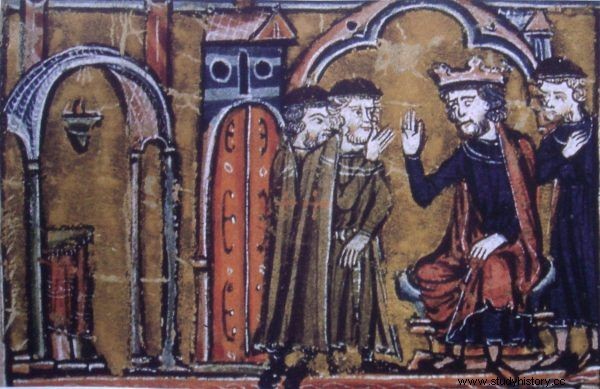
The name of the Knights Templar comes from the Jerusalem Temple. In this performance, we see the King of Jerusalem, Baldwin II, who cedes to the Templars - Hugh of Payens and Godfrid of Saint-Omer - his palace, supposedly built on the foundations of the Temple (William of Tire, "Histoire d'Outre-Mer", 13th century, domain public).
Over time, the acquired goods were combined into the so-called commanderies or commanderies, i.e. monastic houses. They were scattered all over Europe, from Spain to England. Most of them were in France. The Order's outposts have created a real network. Their task was to recruit new members as well as to finance the activities of the Templars in the Holy Land.
Myth 4. They were role models for the Christian knight
The Templars should be a role model, a walking ideal. The reality, however, was different. Many knights sought refuge in the law, not fame. This was facilitated by flexible rules for accepting new brothers. According to the French version of the rule, the order could even recruit excommunicated knights! Of course, an iron discipline prevented any loosening of morals. One of its manifestations, as Martin Bauer points out, was, for example, the requirement that the Templars travel in at least two. That way they could keep an eye on each other.
On the other hand, the Order itself, as it grew rich, also grew into pride and pride. It got to the point where Muslim slaves were not allowed to be baptized just because ... Christian religious could not be held captive. And because the Templars traded huge sums of money, they quickly began to borrow money at interest as well. In the Middle Ages, this practice was strictly forbidden.
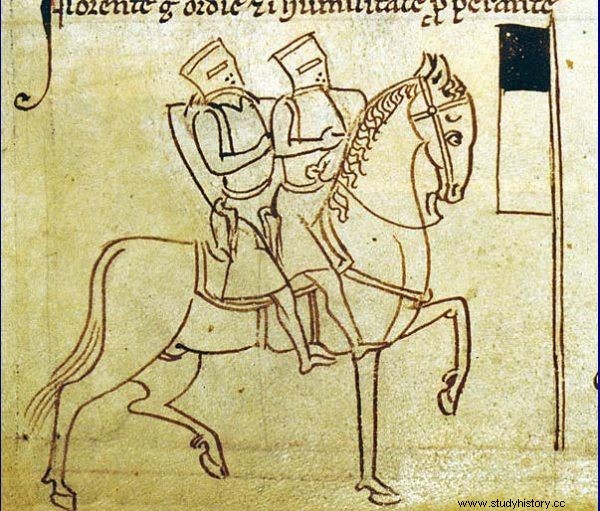
The representation of two knights on one horse has grown to the rank of a symbol of the order. There are many indications that it was not supposed to illustrate the poverty of the brothers, but ... mutual control during the journey (Matthew Paris, "Chronica Majora", public domain).
In order to merge their estates into larger whole, the Templars did not shy away from violence. What's more, they concluded all sorts of truces even with Muslims. It was unthinkable for the newly arrived Crusaders in the Holy Land.
Myth 5. The Templars were a secret brotherhood guarding secret knowledge
Many aspects of the activities of the Knights of the Temple are still unknown to this day. Puzzles surround them. Apparently, they carried out excavations at the site of Solomon's Temple. Some even think that they found and kept the Holy Grail .
The fact is that the Order was completely autonomous thanks to its many sovereignty privileges. It was subject only to the Pope. Perhaps this is why the Templars were shrouded in mystery in the Middle Ages. Besides, they were eager to maintain this state of affairs themselves.
Proud knights in white cloaks, due to their tragic end, are the perfect material for all kinds of fantastic theories. It is speculated that they were engaged in magic and alchemy. That they exchanged secret knowledge with a sect of Muslim assassins. There are even concepts that attribute monk knights ... discover America or create Gothic.
However, all these hypotheses cannot be defended. The truth is, the Templars were just knights. What mattered to them was the fight. Many of them were not interested in secret knowledge ... or any other knowledge. As a result, even the Grand Master had to translate Latin documents during his trial. After the wave of arrests, no secret books were found in the commanderies.
The basis for conspiracy theories is the curse that, before being burned at the stake, on March 18, 1314, the Grand Master of the Order, Jacob de Molay, cast on his torturers, the king, the pope and the accusers. The fact is that none of them survived another year.
Myth 6. They had countless treasures
The vision of a legendary Templar treasure hidden somewhere comes alive from time to time. Supposedly, it was found in the Gisors stronghold in France. Before mining permission was granted, however, the mysterious chests had disappeared. Rennes-le-Château, a small town in the south of France, is sometimes indicated as the place where the treasure is hidden. But that's not all the arguments about. There is also no agreement between seekers as to what the treasure would be. Some talk about the Holy Grail, others about valuables, and still others about the Philosopher's Stone.
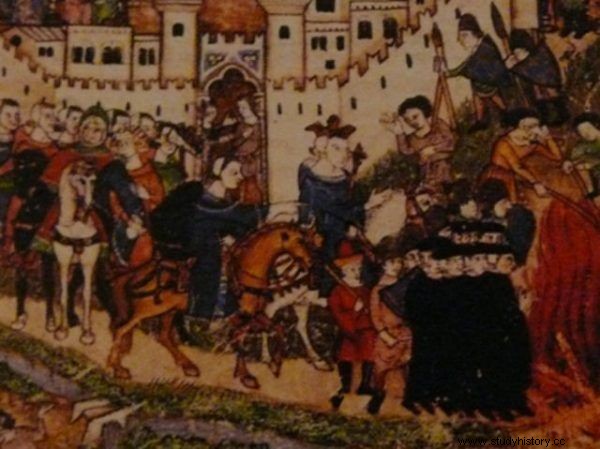
Most likely, the Templars went to the piles for financial reasons. In this 14th-century performance, we see Cocharelli imagining King Philip IV the Beautiful watching the burning of the monks (public domain).
The Knights Templar were famous for their wealth already in the Middle Ages. It was this alleged wealth that led to their undoing. The process and the destruction of the order were initiated and carried out by the king of France, Philip the Beautiful, with the help of the papacy. He hoped to take over at least part of the imaginary treasure. He needed large sums of money due to the numerous wars he waged. He was also the greatest debtor of the Templars himself. By abolishing the order, he got rid of his debt.
The French monarch took advantage of the fact that all possessions in the Holy Land were lost, and the continued existence of the order was put into question. A whole series of accusations were prepared. The monks were accused of heresy, blasphemy, spitting on the cross, worshiping the head of a mysterious god and sodomy. Many Templars were arrested and the order was dissolved after a trial in 1312. Despite strenuous searches, no treasures were found. Today, most historians believe that the legends of wealth were greatly exaggerated. And valuables that the order did have were probably looted during the trial.
Myth 7. The Order operates in secret to this day
The tragic end of the order shrouded in secrecy became a breeding ground not only for theories about the alleged treasure. There are voices that the Templars survived the process and went into hiding. After all, many of the later-established secret societies refer to the legacy of the Order of Solomon's Temple.
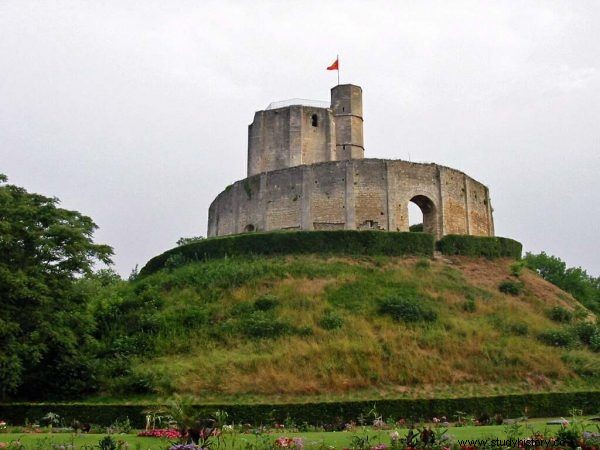
In the ruins of the Gisors castle, enthusiasts struggle to find the treasure of the Templars. With poor results… (photo JH Mora, license CC BY-SA 3.0).
The most popular theory is that a handful of Templars disguised as masons fled to Scotland. There they secretly continued their activities. This legend has its roots in the 18th century Scottish Masonic lodges.
Others believe that the order survived in France and even that was responsible for ... the French Revolution . Apparently, after the beheading of Louis XVI on the guillotine, someone shouted from the scaffold: Jacob de Molay! You have been avenged! It is also suggested that the Jacobin party was named after the last Grand Master. More likely, however, the party responsible for the revolutionary terror takes its name from its meeting place, the Church of St. James.
The truth is much more trivial. It is a fact that not all the Templars died during the purges organized by Filip Piekny. The survivors joined other congregations after the law was dissolved. Some knights joined the ranks of the Knights Hospitaller. The Portuguese Templars founded the Order of the Knights of Christ.
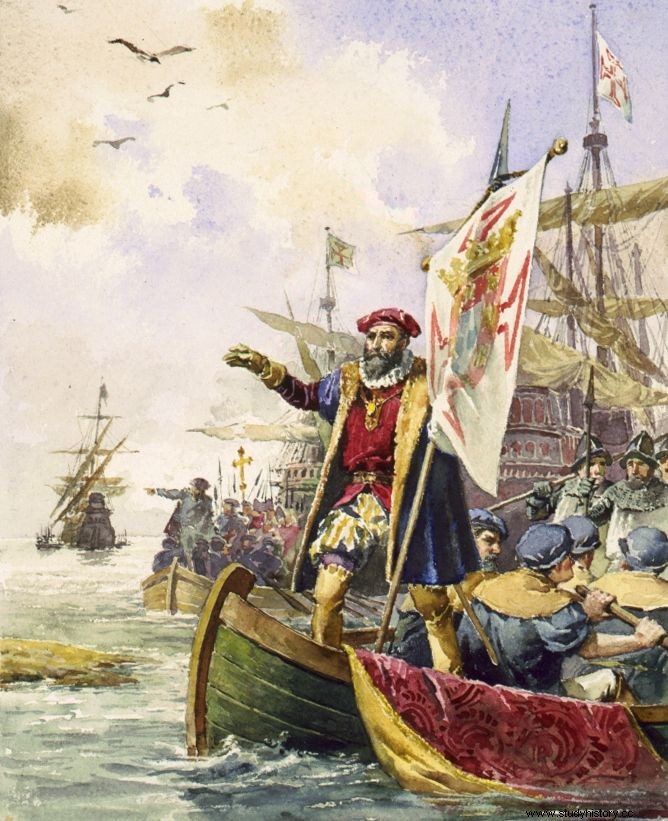
Templars who survived the hecatomb usually joined a related order. In Portugal, they founded their own Order of the Knights of Christ, which later played an important role in the era of great geographical discoveries. This 1880 painting by Ernest Casanova shows Vasco da Gama on a ship under the flag of the Knights of Christ, landing on the shores of Calcutta (public domain).
Many myths surrounding the Templar order can be easily dispelled with today's knowledge. Others don't give up so easily. How to separate facts from legends in such a situation? Martin Bauer in the book “Templars. Myths and Reality ”suggests that it's probably best to… rely on common sense:
As long as these stories do not contradict established facts and thus cannot be debunked, it is up to each of us to judge the dilemma of whether to take them with a pinch of salt or not having found them funny enough, reward them with recognition.
